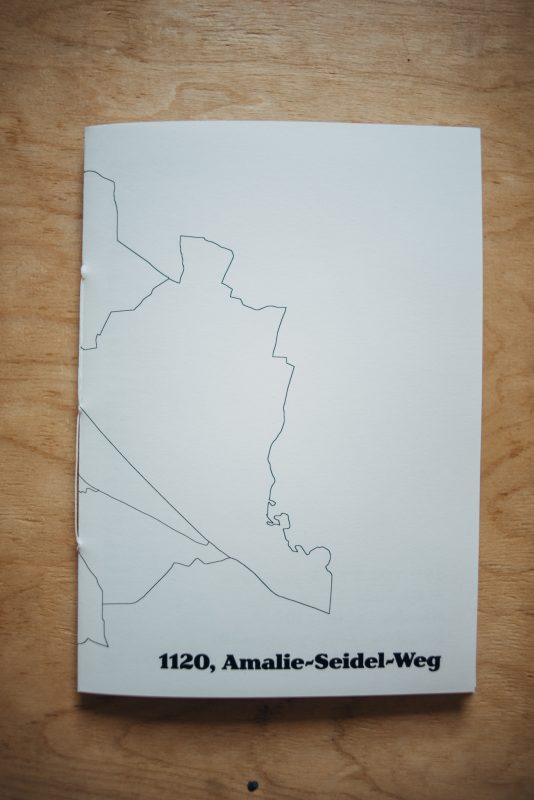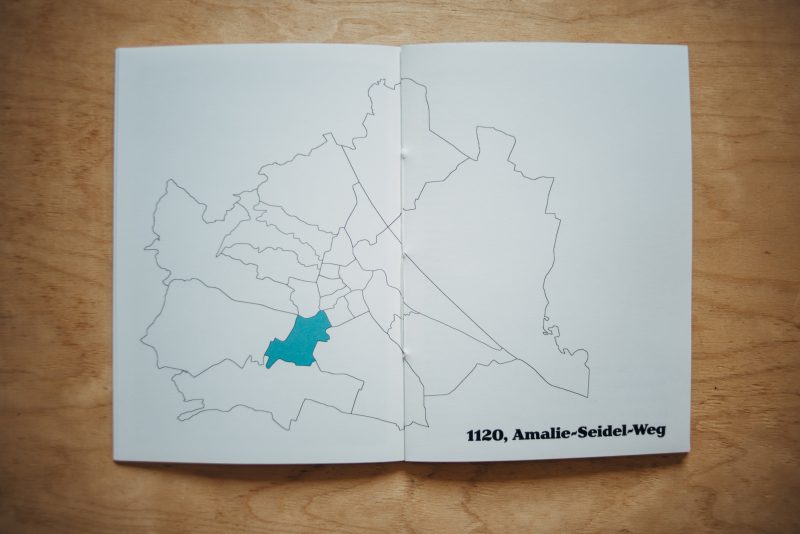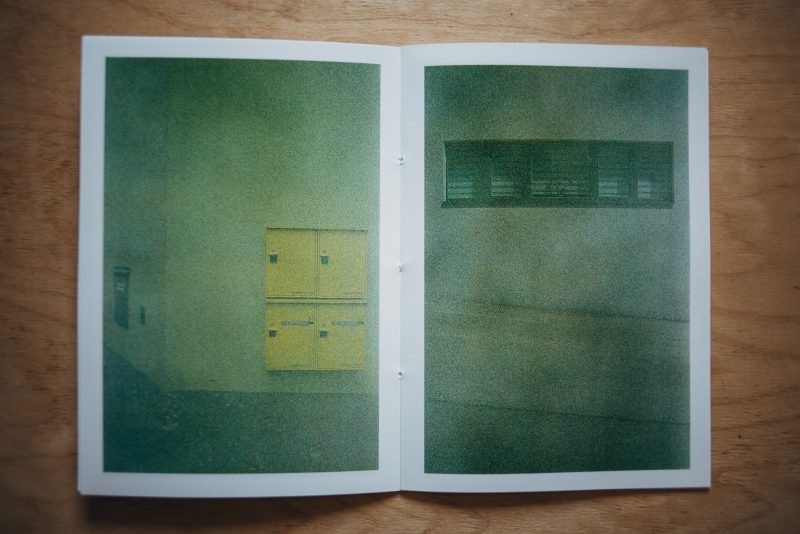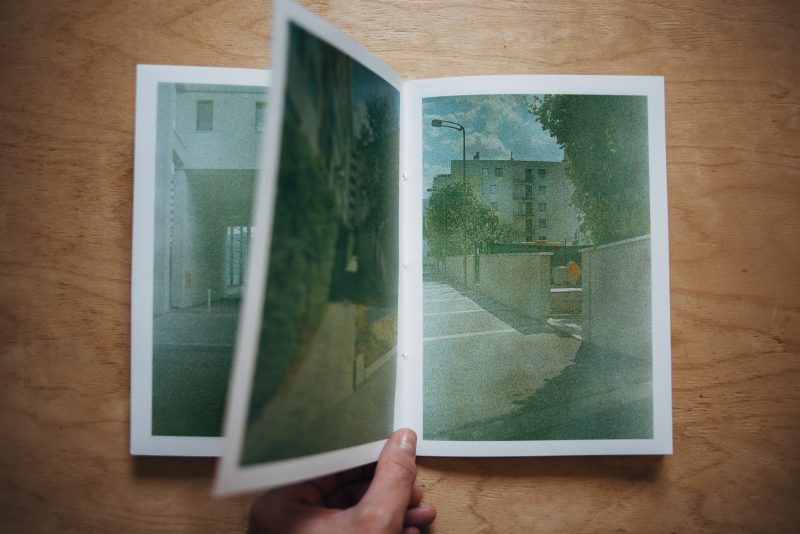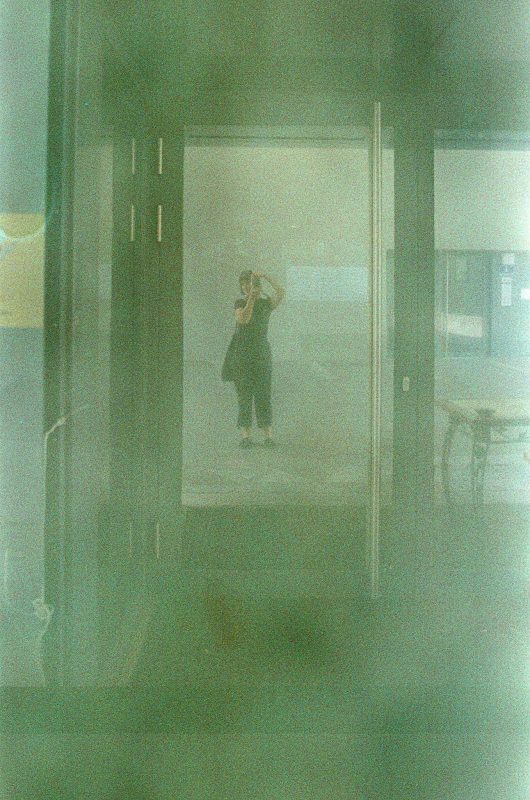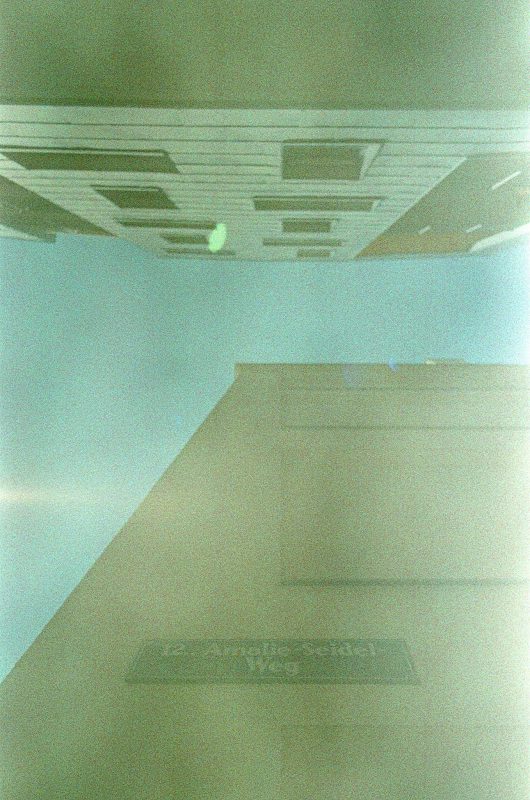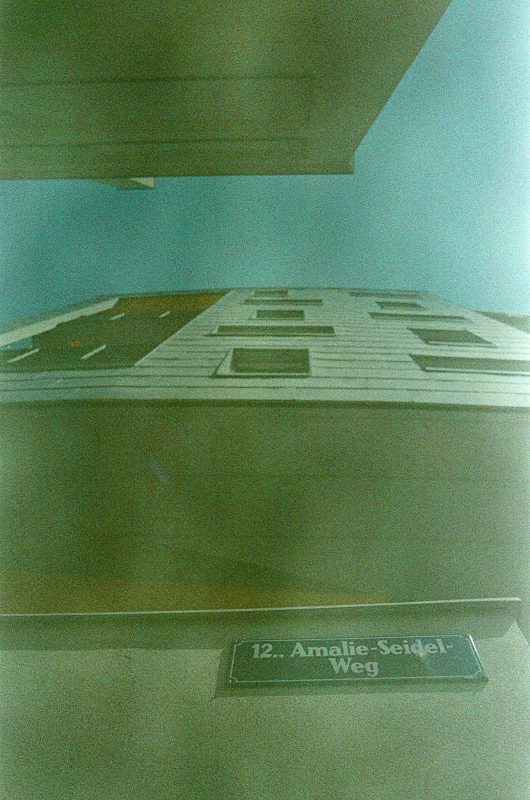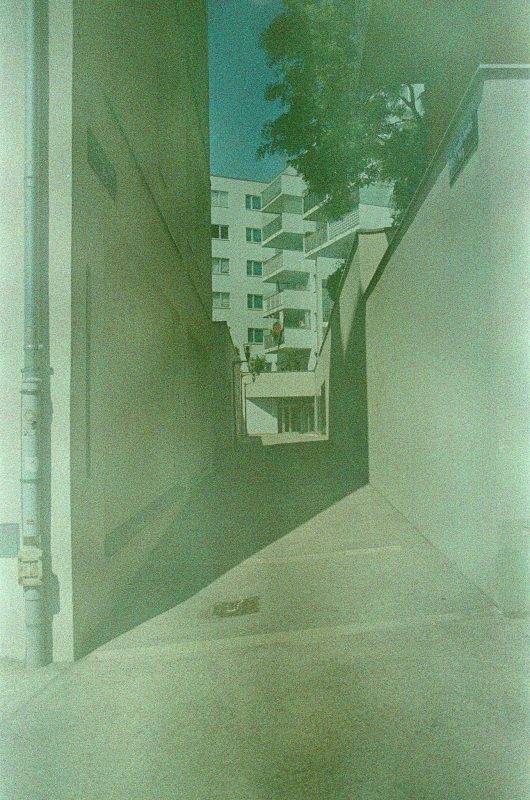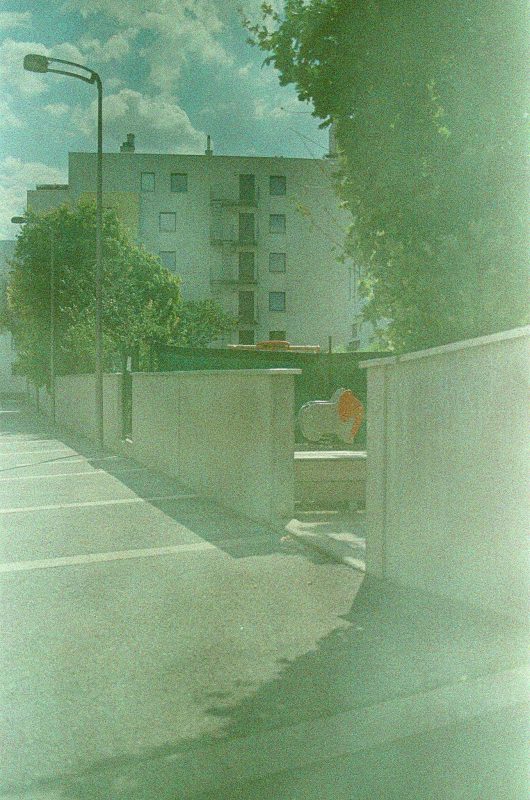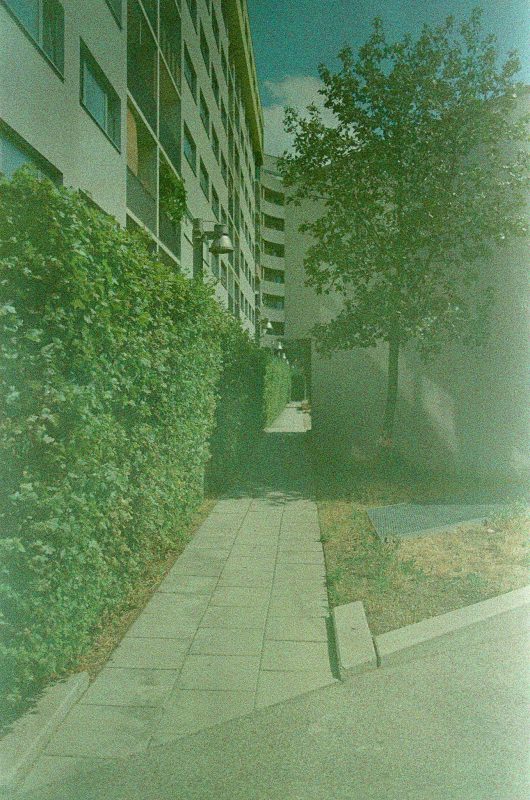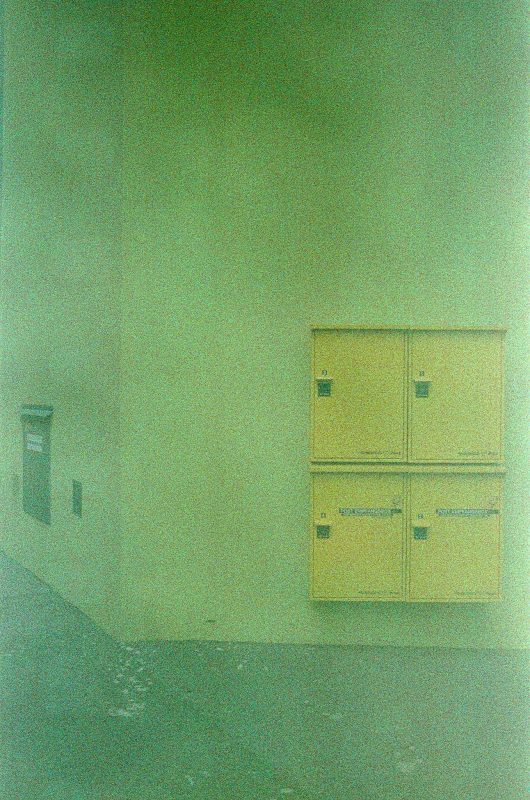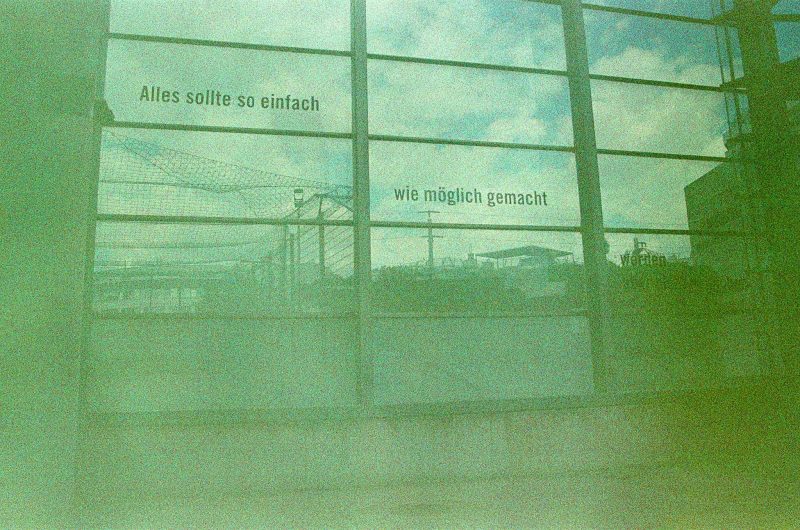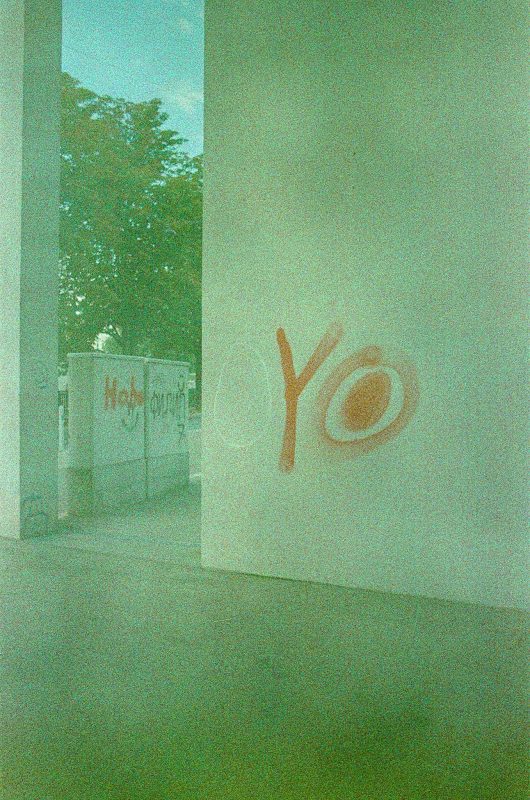Amalie-Seidel-Weg
1120 Meidling
€ 12,00
Pages: 20 + cover
Edition: 5 + artists copy (first edition)
Date: 2022
Film: cross processed, Minolta Centaur 100
Camera: Minolta X300
5 in stock
Buy a print
Amalie-Seidel-Weg (Altmannsdorf, residential complex “Kabelwerk”), named in 2006 after the politician and women’s rights activist Amalie Seidel.
Amalie Seidel was born as Amalie Ryba in 1876 as the daughter of a locksmith, 12 of her 15 siblings died early and even as a schoolgirl she did sewing work at home. In 1888 she had to drop out of public school and took up a job as a maid. Later she worked in a finish factory in Gumpendorf.
In 1892, at the age of 16, Amalie Ryba joined the Gumpendorfer Arbeiterbildungsverein as a member. She was also a co-initiator of the first women’s strike (“Strike of the 700”) in 1893. The demands were a reduction in the daily working time from 13 to 10 hours and a May Day holiday. Her spirited appearance as a speaker not only attracted Viktor Adler’s attention, but also earned her a three-week prison sentence.
In 1895, Amalie Ryba married Richard Seidel, a technician and social democratic activist. The marriage broke up, leaving her to raise her two daughters alone. Seidel was also active in the consumer cooperative movement and was involved in the women’s movement. The years before the First World War were the years of her strongest commitment to women’s emancipation.
After the republic was proclaimed, Amalie Seidel was a municipal councilor from 1919 to 1923 and a member of the National Council from 1919 to 1934. The focus of her political activity was in youth welfare and health care. She fought the system of foster parents, in which children were often taken in by private foster parents only because of the money involved and to find another worker. In 1920 she founded the Vienna youth welfare organization and initiated the children’s outdoor pools in Vienna. At that time she worked in particular with Julius Tandler.
After the February fighting in 1934, she was imprisoned for a month and then withdrew from politics forever. However, she made her apartment available for illegal meetings of socialist women. In 1938 she married the Jewish Viennese local politician Sigmund Rausnitz in order to protect him through this marriage. However, he committed suicide in 1942, which hit Amalie Seidel hard. In 1944, after the assassination attempt on Hitler, she was imprisoned for a few days in the Vienna Regional Court.
After the Second World War, Amalie Seidel finally lived with her daughter Emma and her husband Karl Seitz, the former head of state, party leader of the SDAP and mayor of Vienna.

